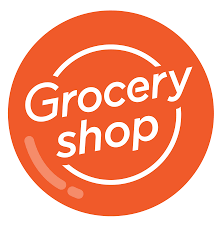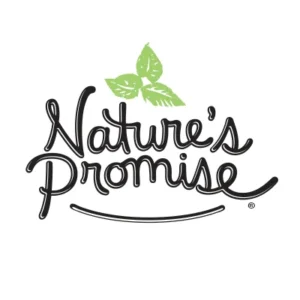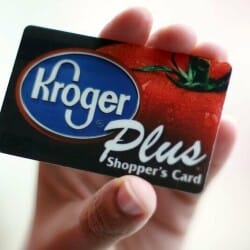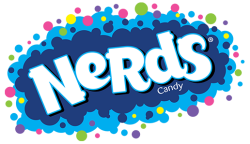
From AI Pricing to Amazon’s Expansion: Key Takeaways from GroceryShop 2024
The grocery world is profoundly transforming thanks to cutting-edge tech, evolving shopper habits, and bold new strategies.
GroceryShop 2024 was a total eye-opener, with industry leaders and innovative brands gathering to discuss what’s next.
Whether you’re a grocery geek or curious about what will land in your shopping cart soon, the trends discussed here will have you rethinking your category management plans.
Here are some trends that could transform the CPG world.:
AI-Powered Dynamic Pricing: A Game-Changer for Fresh Produce
Imagine entering a store where prices constantly shift—not to confuse you but to ensure nothing goes to waste. That’s AI-powered dynamic pricing and a lifesaver for perishable goods. At GroceryShop 2024, it became clear that retailers love how AI optimizes prices based on how fast an item is nearing its expiration.
Think about the fresh spinach that was too expensive in the morning. By evening, it’s a deal, thanks to real-time AI pricing. It’s tech that keeps food out of the trash and helps stores stay profitable while offering shoppers more savings.
Why it’s a win-win:
- Products get sold before expiration, cutting food waste while saving shoppers money.
- Note: Did you know that 30% of food in U.S. grocery stores is thrown away and that U.S. retail stores generate about 16 billion pounds of food waste annually?
- Shoppers are thrilled with fresh deals on still perfectly fine items.
- Retailers optimize pricing for maximum revenue without throwing away unsold goods.
Private Labels Are Taking Over the Shelves (And Winning Hearts)
Gone are the days when store brands were the less expensive, less exciting option. Private labels are now all the rage, some even beating national brands regarding quality and innovation.
Take Ahold Delhaize, one of the leading grocery stores. It offers private-label brands such as Nature’s Promise and Simply Enjoy. By 2025, it aims to have 45% of its sales come from private labels in Western Europe, compared with 35% currently.
 Private-label products are attractive; they give retailers complete control over pricing, packaging, and sourcing.
Private-label products are attractive; they give retailers complete control over pricing, packaging, and sourcing.
And private labels aren’t just copycats —they’re carving out their own space by tapping into organic, eco-friendly, and gourmet options trends. Why private labels are killing it:
- Higher profits: Retailers can control production costs, which means better margins.
- Consumer loyalty: Unique products build a deeper bond between shoppers and stores.
- Standing out: Exclusive store brands give retailers a competitive edge through product differentiation, pricing control and margin improvements.
Note: For more insight on the private-label market, check out our Webinar, which breaks down the key differences between private-label and national brand shoppers.
Personalized Promotions: It’s All About You
Mass promotions are now outdated. In 2024, it’s about making deals that feel like they’re made just for you.
Ram Krishnan, CEO of PepsiCo Beverages North America, said the old-school shotgun approach to promotions is being replaced by personalized offers that deliver value to shoppers.
Data-driven promotions work because people are more likely to buy when the discount is applied to something they want. Why send a coupon for chips when you’ve been filling your cart with hummus? The key takeaway here is relevancy.
Perks of personalized promos:
- More sales: You’re more likely to buy when offers align with your wants.
- Better loyalty: Shoppers feel valued when their preferences are catered to.
- Smarter marketing: Brands spend their promo dollars on the right customers at the right time.
Loyalty Programs: More Than Just Points
We’ve all heard of loyalty programs, but now they’re becoming more than point collectors.
Stuart Atiken, Kroger’s chief merchant and marketing officer, said 97% of Kroger’s transactions involve their Kroger Plus loyalty card. This compares with 50% to 60% for average grocery loyalty programs.
 Kroger has a treasure trove of data on what customers like, buy, and crave. This insight helps Kroger create smarter, personalized shopping experiences and develop customized promotions to drive higher sales.
Kroger has a treasure trove of data on what customers like, buy, and crave. This insight helps Kroger create smarter, personalized shopping experiences and develop customized promotions to drive higher sales.
Why loyalty programs are getting smarter:
- Data, data, data: Retailers gain insight into shopping habits, helping them make better decisions.
- Personalized experience: Customers get offers that speak to their tastes.
- More engagement: Loyalty programs keep customers coming back.
Ferrara’s Nerds: How an Old Favorite Made a Sweet Comeback
Let’s talk candy—who doesn’t love a good comeback story? Ferrara’s Nerds candy brand went from sales of $50 million to a jaw-dropping $700 million in just five years.
 Their secret? Returning to the basics and focusing on brand authenticity, product innovation, trend spotting, and an omnichannel approach involving traditional retail stores, e-commerce, and subscriptions.
Their secret? Returning to the basics and focusing on brand authenticity, product innovation, trend spotting, and an omnichannel approach involving traditional retail stores, e-commerce, and subscriptions.
“When you know who you are, you know what to do,” said Gregory Guidotta, Ferrera’s chief marketing officer.
Whether it’s new flavors, creative packaging, or a fresh spin on an old favorite, Ferrara’s strategy shows that staying relevant isn’t about chasing trends—it’s about knowing who you are and letting innovation do the heavy lifting.
Another interesting angle raised by Guidotti was that the candy category is a 100% emotional purchase and that Ferrera had to identify multiple ways to capitalize on this.
From the Shopper Intelligence perspective, emotions are something that data doesn’t tell you. This is one of the reasons why our surveys, which involve 650,000 shoppers worldwide annually, deliver powerful insight that you can’t get at scale from other sources.
What we can learn from Ferrara:
- Brand authenticity rules: Sticking to your core values resonates with customers.
- Innovation keeps things exciting: Fresh ideas keep customers interested, even in the long run.
- Knowing your market: Ferrara kept a close eye on consumer trends and jumped at the right time.
Amazon’s Physical Store Push: From Clicks to Bricks
We all know Amazon rules online shopping, but did you know they’re opening more physical stores?
They’re starting to enter brick-and-mortar with Amazon Fresh grocery stores and partnering with grocers like Metro Market to combine the convenience of e-commerce with the in-store experience.
This hybrid model gives customers the best of both worlds: they can shop online when they want to or head into the store when they need something right now. These physical locations double as fulfillment hubs, making delivery even faster and returns easier.
Why this matters:
- Seamless shopping: Switching online and in-store is now easier than ever.
- Fast deliveries: Local stores speed up delivery times.
- Broader reach: Partnerships with regional grocers help Amazon tap into new markets.
Final Thoughts: Embracing the Future of Grocery
The grocery industry is profoundly transforming, driven by technological innovations, evolving consumer behaviors, and bold new business strategies.
From AI-powered dynamic pricing to personalized loyalty programs, the shopping experience that was once a simple errand is becoming increasingly high-tech and tailored.
For grocery retailers, embracing these changes will be critical to staying competitive in the years ahead. Investing in the right technologies, rethinking category management, and delivering more personalized experiences will be key. Those who can successfully blend the convenience of e-commerce with the immediacy of physical stores will be well-positioned to thrive.
For CPG brands and suppliers, success will require:
- Enhanced Data Capabilities. The rise of personalized promotions and loyalty programs means CPGs must have deeper insights and data analytics to understand shopping behaviors.
- Prioritizing Agility and Innovation. With private-label products raising the bar, national brands must stay ahead through constant product innovation and the ability to respond quickly to market changes.
- Embracing Omnichannel Strategies. As grocery shopping becomes more seamless across online and physical channels, CPG suppliers must ensure their products are visible and available across all touchpoints.
- Rethinking Packaging and Pricing. Dynamic pricing and the growth of value-focused private labels will force CPG brands to reevaluate their packaging, pricing, and promotional strategies.
